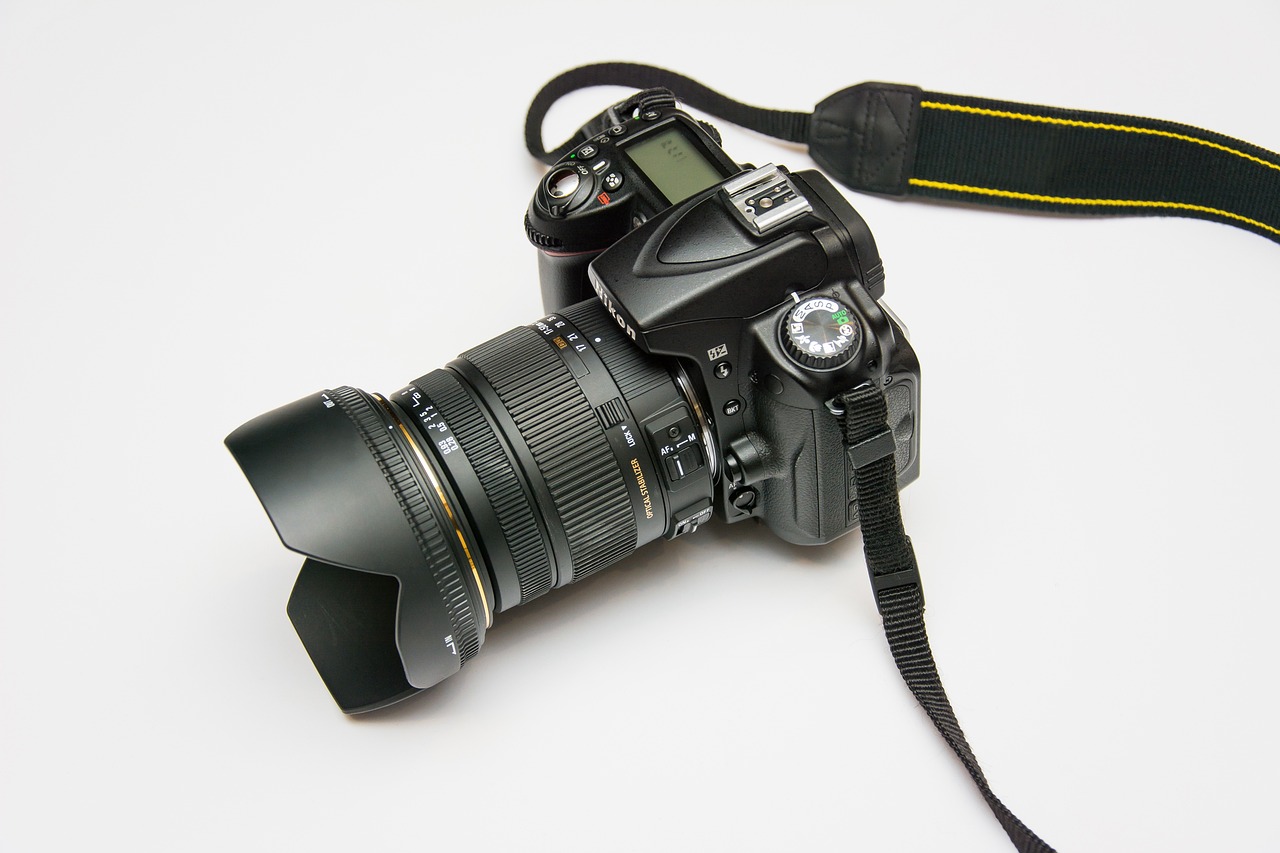Cameras take us to new places, capturing moments that change our memories and views. This guide is for everyone, from pro photographers to newbies. It covers camera tech and features that help you create.
Get ready for a fun journey through camera history, types, and what makes them great. We’ll explore it all.
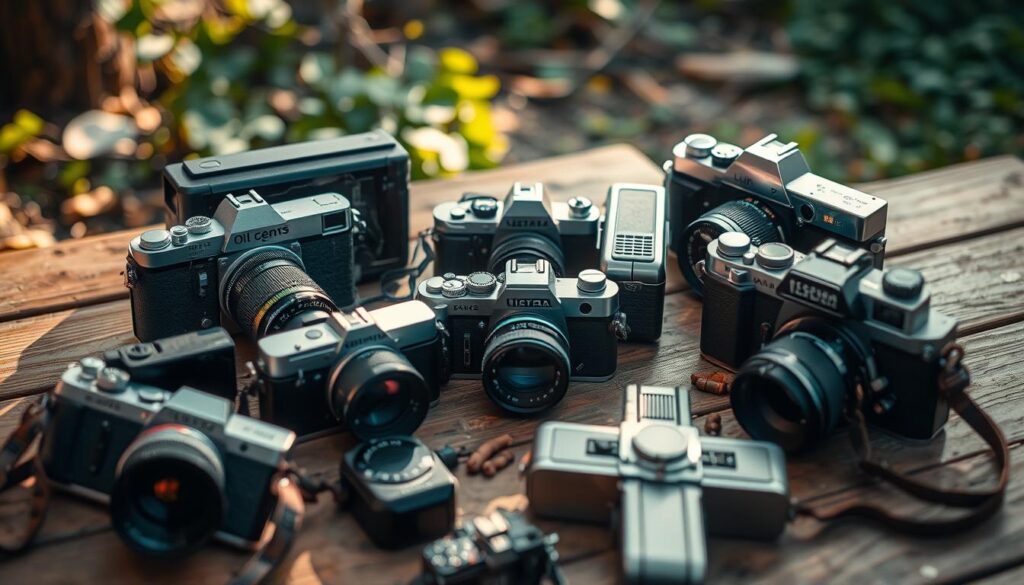
- Here is the history of cameras growth and the contemporary classification of cameras.
- The guide will explore the fundamentals of a cameras; these being aperture, shutter speed and sensors in an image.
- Read more about lenses and what benefit can they bring in photography.
- Visit more complicated settings of your camera such as High Dynamic Range (HDR) and time lapse shooting.
- Get information about some of the basic accessories that you require when operating a camera.
Introduction to Cameras
The world of photography has changed a lot over time. Cameras have been at the center of these changes. From old glass plates to today’s digital cameras, they’ve evolved a lot.
Now, we have many types of cameras. Each one has special features for different photographers.
Brief History of Camera Evolution
The cameras story started in the 19th century. The first daguerreotype process let people take detailed images on copper plates. Then, film cameras came, and later, digital ones.
Now, we have DSLR and mirrorless cameras everywhere. They are key in today’s photography.
Types of Cameras: DSLR, Mirrorless, and Compact
- DSLR (Digital Single Lens Reflex) cameras are loved for their great pictures and many lens choices. They are favorites among pros and serious hobbyists.
- Mirrorless cameras are smaller and lighter. They take amazing pictures, just like DSLRs.
- Compact cameras, or point-and-shoot, are easy to use. They’re perfect for everyday photos or when you’re traveling.
The different cameras types also have their own strengths. Being aware of what DSLRs, mirrorless cameras and compact models provide assists you in choosing the perfect model for your photographs.
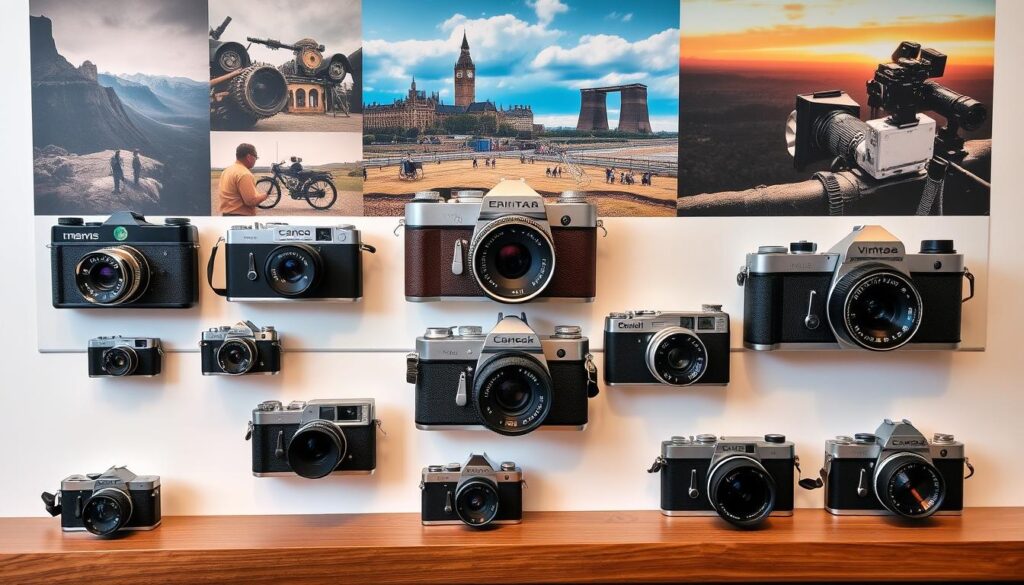
Understanding Camera Fundamentals
If you want to make the best of your camera knowing some vital aspects will assist you greatly. Aperture and shutter speed are two things. They regulate how light or dark the pictures are and the kind of feeling you want them to have.
Here are some great camera options for beginners:
1. Canon EOS
A user-friendly DSLR with built-in tutorials, 24.1 MP, and Wi-Fi for easy sharing.

2. Nikon D3500
Compact and lightweight, this DSLR features a 24.2 MP sensor and an intuitive Guide Mode.

3. Sony Alpha a6000
A mirrorless camera with fast autofocus, a 24.3 MP sensor, and a compact design perfect for travel.
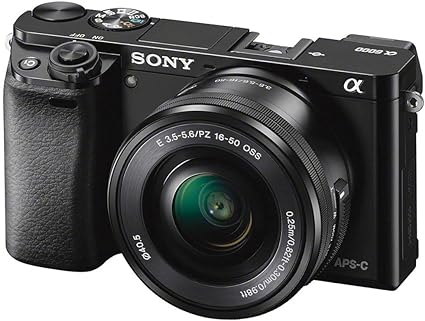
6. Panasonic Lumix GX85 (GX80)
A mirrorless camera with dual image stabilization, 16 MP, and 4K video capabilities.
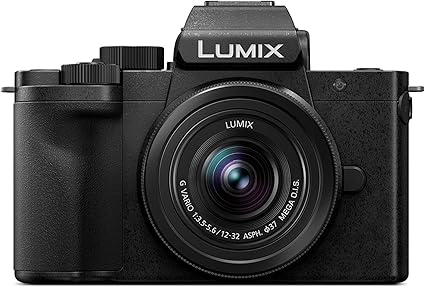
Aperture: Controlling Depth of Field
The aperture is the diaphragm: in other words, aperture is the lens opening. It opens for light into the camera. As we alter the aperture size we are able to alter the depth of field.
With a big aperture such as f/2.8, the focus on the object and surrounding will produce blurry background. It directs your eye towards the area of interest. What happens when a small aperture such as f/16 is used, is that more of the scene is in relatively sharp focus.
Shutter Speed: Freezing or Blurring Motion
The shutter speed must be how long the camera sees the light. It influences the manner in which you record motion. A small value set for this parameter (like 1/1000 sec) freezes action.
This helps your images appear very crisp and particularly if it is Children or any other fast subject. Dialogues blurred when the image taken from the camera where shutter speed is slow and equal to 1/30 sec. It provides kinetics in your pictures.
Understanding aperture and shutter speed possibilities make one to explore more possibilities. You can tell stories with the retouching of your photos.
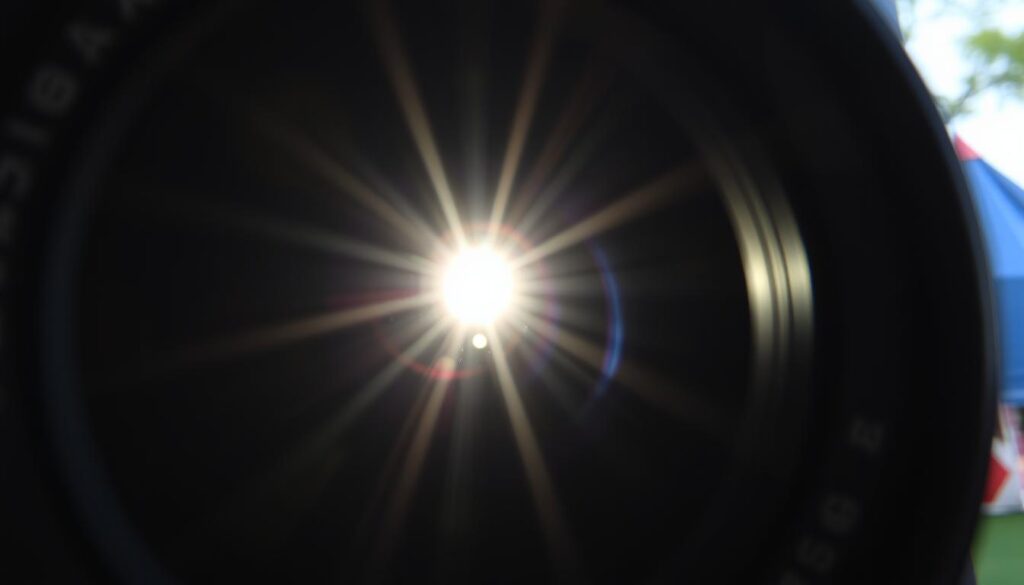
Lenses: The Eyes of Your Camera
When it comes to photography, the lenses of the camera are what matters most of the time. They allow you to look at life in a new lens, and new perspective. A wide angle lens displays vast areas whereas the telephoto lens brings near large distances.
Lenses have many lens features as it is shown above. Awareness of the focal length Aperture, and image stabilization tell you which one to choose. As for the experience, this is the same for novices and professionals alike.
Exploring Lens Focal Lengths
Focal length is important. It alters vision as to how much one is seeing and the size of objects. Telephoto lenses are good for extensive fields, say landscapes. Point and shoot lenses are most useful for close work on distant objects.
| Lens Type | Focal Length Range | Best Uses |
|---|---|---|
| Wide-Angle | 14mm – 35mm | Landscapes, Architecture, Interiors |
| Standard | 35mm – 85mm | Portraits, Street Photography, Documentary |
| Telephoto | 85mm – 600mm | Wildlife, Sports, Portraits |
Choosing the right camera lenses is crucial. It affects how your photos turn out. Knowing about lens features lets you create amazing pictures.
Cameras and Image Sensors
Specifically, at the heart of every camera there is an image sensor. It just takes light and converts it into a digital picture as this part of it. There are two main types: CMOS and CCD. This is a very helpful information in that it assists photographers arrive at the right camera decisions.
CMOS vs. CCD Sensors
CMOS sensors use less energy and work fast. They’re good for quick shots and are in many cameras. CCD sensors, however, give better pictures in dark places. They’re in top cameras and special uses.
Sensor Size and Resolution
the size of the sensor determines the quality of the camera. More light is garnered by bigger sensors, for instance the full-frame DSLRs. This means improved picture quality in the night and more distinction.
Finger sized sensors while portable may not be as good as slightly larger sensors like those in phones. Tack sharper images allow for bigger print sizes and give us the ability to crop Even more.
| Sensor Type | Advantages | Disadvantages |
|---|---|---|
| CMOS | Energy-efficient Faster readout speeds Lower manufacturing costs | Generally lower image quality in low light More susceptible to image noise |
| CCD | Exceptional image quality, particularly in low light Higher dynamic range | Higher power consumption Slower readout speeds Higher manufacturing costs |
The image sensor of a digital camera may also be known as charge-coupled device or CCD for short as it’s the core of a digital camera.” That’s what make[s] the light turn into the digital information [which in turn] becomes a photograph.
Mastering Camera Settings
For a photographer it is important to know or learn how to navigate through the camera settings. Holding the camera in auto mode and learning how to handle aperture priority and digital manual modes will make you a better photographer. The above allows you to manage your photos and ensure you achieve the preferred appearance.
Automatic Exposure Mode
Automatic mode is convenient in working with because it is particularly beneficiary for new photographers. It simply allows the camera to decide what the appropriate aperture and shutter speed are for the shot. Still, it might not allow you the control and creativity that you advance as you progress in your sessions.
Aperture Priority Mode
Aperture priority mode is perfect for people who would like to take additional control. Instead of the shutter speed being you set it, the aperture that you select, the shutter speed is set automatically. Some people use it for blurring or sharpening some parts of their photo.
Manual Exposure Mode
Manual mode is the most flexible one. You manipulate them yourself; aperture and the shutter speed are independent variables that must be set. It is a bit tricky but it offers users the precision they need to make around photos.
It is relevant to know these exposure modes to enhance your photography. Understanding how to work with the modes of your camera extends your creativity in using the gadget. We want you to have fun, create stunning images and present them in a way that only you can.
Cameras According to the Different Types of Photography
The right camera is key for amazing photos. Whether you love landscapes or portraits, the right camera and lens help a lot. They make your photos look great and tell your story.
Landscape Photography
Nature photos depict the beauty of some of the natural features in the world. As such, photographers require a camera that can capture fine images, and be responsive to light, in many locations. This is well done in DSLR and mirrorless cameras. They have the props that you need for those outdoor photoshoots.
- Choose a camera with a big sensor, like full-frame or APS-C. It helps with light and dark pictures.
- Find a camera with good autofocus and weather-sealing. These are great for tough outdoor shoots.
- Get a wide-angle lens for big views. Also, a good tripod helps keep your photos sharp.
Portrait Photography
Taking portrait photos therefore requires special features on the cameras. They night use shallow focus depth for the purpose of achieving high subject sharpness and low background sharpness. Some of the recommended cameras are mirrorless and DSLR cameras with medium-form and full-form sensors. What They Offer You: It provides you with the quality of your image and the ability to take depth.
| Camera Type | Preferred Features |
|---|---|
| Mirrorless | High-resolution sensor, fast autofocus, and in-body image stabilization for sharp, detailed portraits. |
| DSLR | Full-frame sensor, advanced autofocus system, and the ability to use a wide range of portrait-friendly lenses. |
For any photography, pick a camera that fits your needs and style. Knowing what each genre needs helps you choose the right camera. This way, you can take amazing photos that show your creativity.
Advanced Camera Features
The cameras available in today’s market come with many interesting things. Two general ones are the High Dynamic Range (HDR) and time lapse photography. Knowing these can make your photos wonderful.
High Dynamic Range (HDR)
HDR allows you to make photographs with higher definition. It is used in conjunction with other exposures to reveal both the bright and the low light areas of the subject. This makes your photos look better is the final message that is stamped on the viewer’s mind after a photo has been enhanced or touched up.
The good things about HDR include:
- It’s great for pictures with lots of light and dark, like sunny landscapes.
- It shows details in both bright and dark areas, making images look real.
- It makes your photos look deeper and more interesting.
Time-lapse Photography
Time-lapse photography turns many pictures into a short video. It shows how things change over time, like clouds moving or cities growing.
Time-lapse has many benefits, like:
- It makes time seem to pass quickly in a cool way.
- It shows small changes in a scene, like how a flower blooms.
- It creates amazing videos for many uses.
Learning HDR and time-lapse can open up new ways to take pictures. Whether you love landscapes, city views, or just trying new things, these features can make your photos stand out.
| Feature | Description | Benefits |
|---|---|---|
| HDR | Captures a wider range of tonal values in a single image | Reveals details in highlights and shadows, enhances visual impact |
| Time-lapse | Captures a sequence of images at regular intervals and compiles them into a video | Captures the passage of time in a visually compelling way, highlights subtle changes |
Camera Accessories
Improve your photo taking experience with the best camera accessories. They can make you understand your environment in a new vision. Among those types you can find everything from heavy-duty tripods to compact camera baggage.
Tripods and Camera Bags
A good tripod is very important if you want to take sharp pictures. It supports your camera and helps to stabilize it and work even in conditions of low lighting. Accompany it with camera bag that not only protects your equipment but also within your easy access.
Lighting Tops and Bottoms
Tame flashes and light modifiers for good control over your photos. They allow you to create the light for magnificent pictures. Make use of diffusers, reflectors and softboxes to bright up your photographs.
Table of Contents
FAQ
What are the different types of cameras available?
There are DSLR, mirrorless, and compact cameras. Each type has special features. They meet different photography needs and likes.
What is the difference between aperture and shutter speed?
Aperture lets more or less light in, changing the depth of field. Shutter speed controls how long the camera is open. It helps freeze or blur motion.
How do image sensors (CMOS and CCD) impact camera performance?
CMOS and CCD sensors affect image quality and how well cameras work in the dark. Knowing the differences helps pick the right camera.
